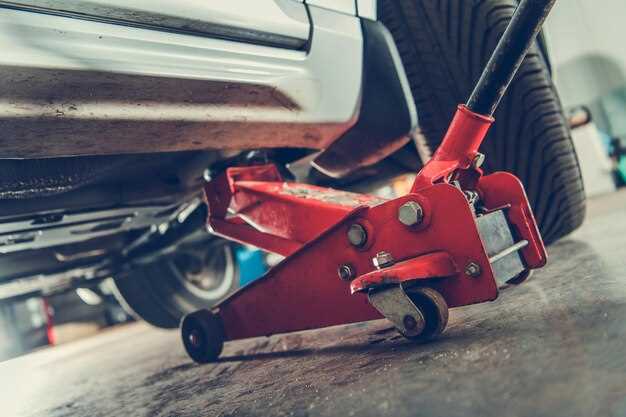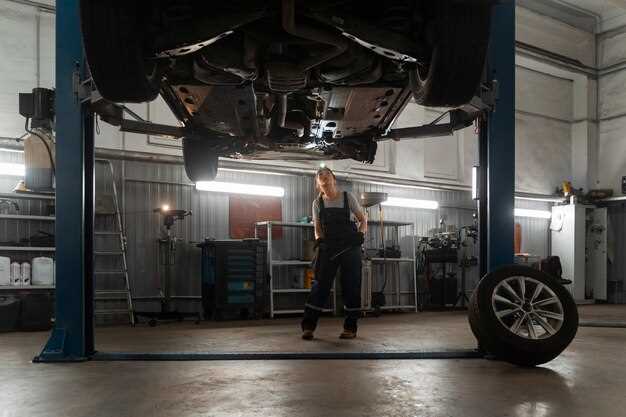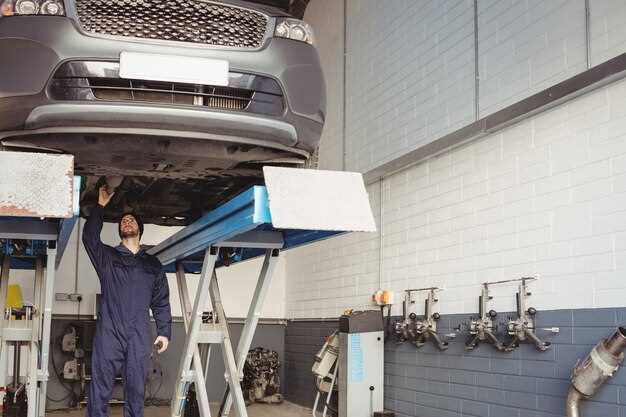
When it comes to maintaining your vehicle, having the right equipment is crucial for ensuring safety and efficiency. A quality lift is an essential tool for any garage dedicated to truck maintenance. Whether you’re a professional mechanic or a DIY enthusiast, selecting the proper jacks and lifts can make a significant difference in your repair efforts.
In this article, we will explore the top jacks and lifts specifically designed for trucks. We’ll dive into the various types available, their key features, and what makes them ideal for your maintenance tasks. From hydraulic lifts to portable jacks, understanding these tools will empower you to tackle any job with confidence.
Investing in the right lift not only streamlines your workflow but also enhances safety while working under heavy vehicles. By ensuring proper support and stability, these tools can help you prevent accidents and damage during repairs. Let’s take a closer look at some of the top recommendations to elevate your garage setup and meet all your truck maintenance needs.
Choosing the Right Vehicle Lift for Heavy-Duty Trucks
Selecting the appropriate vehicle lift for heavy-duty trucks is essential for efficient maintenance and repair in a garage setting. When considering a lift, it’s crucial to assess the weight capacity, as heavy-duty trucks often exceed the limits of standard lifts. Opt for a lift that can handle the maximum weight of your vehicles while providing a safety margin.
Another important factor is the lift type. Two-post lifts offer great accessibility and are generally suitable for light to medium-duty trucks. However, for heavier models, four-post lifts provide superior stability and are ideal for heavier loads. They ensure the truck is secure during maintenance, allowing for tires to be changed, brakes to be inspected, and other repairs to be performed safely.
In addition to weight capacity and type, consider the lift’s features, such as adjustable arms and a low-profile design, which can accommodate various truck sizes and configurations. A jack that allows for easy access to the undercarriage is also beneficial, as it permits efficient service without the need for extensive disassembly.
Furthermore, check the lift’s footprint and available garage space. Some lifts may require more vertical clearance than others, particularly if they have an overhead design. Ensure your garage can accommodate the lift dimensions without compromising the workspace.
Lastly, prioritize safety features, such as automatic locking mechanisms, safety straps, and emergency stop buttons. A well-designed vehicle lift will enhance operational efficiency while ensuring that all maintenance tasks can be performed with minimal risk to the technician.
Comparing Garage Jacks: Features and Specifications

When it comes to vehicle maintenance, selecting the right garage jack is crucial for efficiency and safety. Various features and specifications distinguish one jack from another, making it essential for users to understand these differences.
Weight Capacity: One of the primary specifications to consider is the weight capacity of the jack. Different models can support varying loads, typically ranging from 2 tons to 4 tons or more. Ensure the lift can comfortably handle your vehicle’s weight to prevent accidents and equipment failure.
Lift Height: The range of lift height is another important factor. A jack with a higher lift capability can provide better access to the undercarriage of larger vehicles. Some jacks can lift as high as 20 inches, while others may only reach 14 inches. Evaluate the types of vehicles you will work with to determine the appropriate lift range.
Construction Material: The material used in the jack’s construction affects its durability and weight. Steel jacks tend to be sturdier and more robust, while aluminum options are typically lighter and easier to maneuver. Consider your preferences and requirements when choosing the material.
Portability: For users who need to move the jack frequently, portability is essential. Look for models that come with wheels for easier transport, along with less weight without sacrificing strength. Some jacks also feature a compact design for convenient storage.
Ease of Use: Features such as a quick lift mechanism can significantly impact usability. Jacks that allow for rapid lifting with minimal effort are particularly beneficial. Additionally, consider grips and handles designed for comfort, ensuring a smoother operation during maintenance tasks.
Safety Features: Safety should always be a priority when using a jack. Look for models equipped with safety locks and overload protection. These features help to secure the vehicle in place and prevent overloading, providing peace of mind during repairs.
In summary, when comparing garage jacks, consider weight capacity, lift height, construction material, portability, ease of use, and safety features. Selecting the right lift will not only enhance your vehicle maintenance experience but also ensure a safer working environment.
Safety Tips for Using Jacks and Lifts during Truck Repairs

When performing repairs in your garage, using a lift or jack safely is crucial to prevent accidents and ensure a smooth workflow. Always begin by inspecting your equipment before use. Check for any signs of wear or damage on the lift or jack, including hydraulic fluid leaks, which can compromise their effectiveness.
Make sure to use the right jack or lift for the weight of the truck you are working on. Each lifting device has its load capacity, and exceeding this limit can lead to catastrophic failures. Always consult the manufacturer’s specifications to confirm that the equipment is suitable for your specific truck model.
Ensure the area around the lift or jack is clear of obstacles and that the ground is level and stable. An uneven surface can cause the lift or jack to tip over, increasing the risk of injury. To further secure the vehicle, use wheel chocks to prevent any accidental rolling while it is lifted.
Never place any part of your body underneath a vehicle that is only supported by a jack. Always use jack stands in conjunction with the jack for added safety. Jack stands provide a secondary support system that can better handle the weight of the vehicle in case the jack fails.
While working under a lifted truck, ensure you have adequate lighting. Poor visibility can lead to mistakes and increase the chance of accidents. Additionally, keep your work area tidy; tools and parts scattered around can create tripping hazards.
Make it a habit to communicate with others in the garage while using lifts and jacks. This ensures that everyone is aware of the work being done and can help maintain a safer environment. If someone else is operating the lift or jack, avoid standing directly under the vehicle and keep a safe distance.
Finally, always wear appropriate safety gear, including gloves and goggles. This will protect you from debris and any potential hazards while performing truck repairs. Adhering to these safety tips will help you maintain a safe and efficient work environment in your garage.




